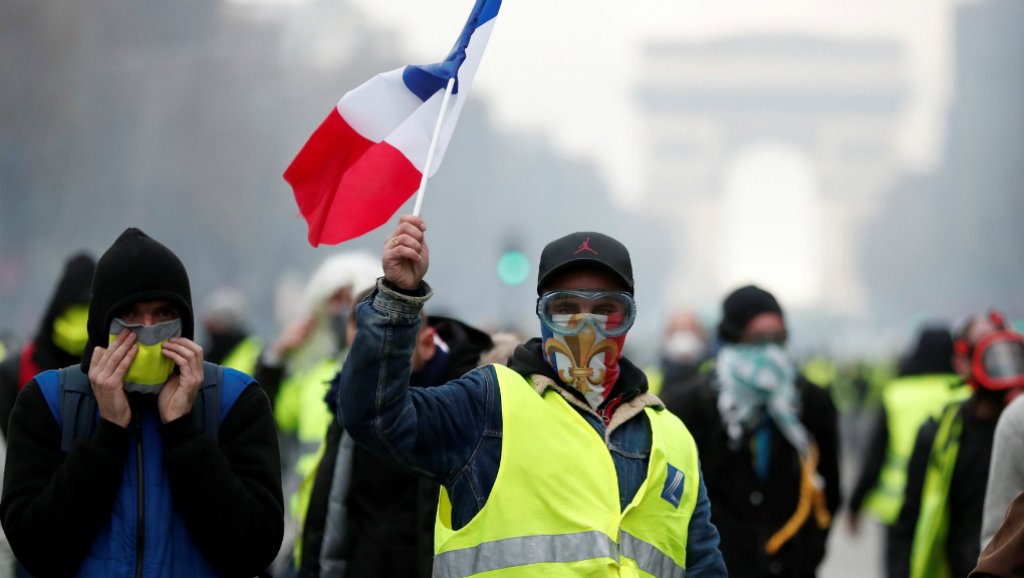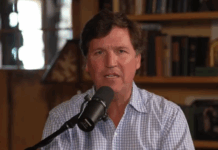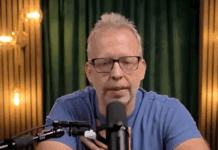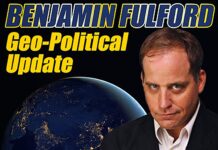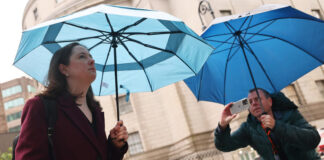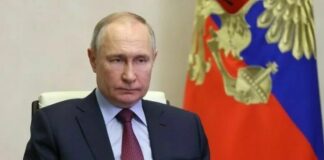Authored by Robert Gore via Straight Line Logic blog,
The mainstream media has degenerated irreparably. Here’s a reliable rule of thumb: if it’s important it’s not covered; if it’s covered it’s not important. Stories in the American mainstream press about Yellow Vest protests have been few. One aspect of the protests, transcendently important, has received scant coverage.
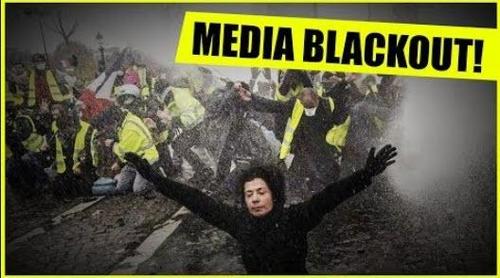
The Yellow Vest protestors have called for a coordinated run on French banks. Whether they realize it or not, they’re playing with nuclear warheads that could annihilate not just the French, but Europe’s and the entire world’s financial system. Because inextricably linked to the ends of contemporary governments―how much they can screw up the lives of those who must live under them—is the question of means―how do they fund their misrule? The short answer is taxes and debt.
Since 1971, when President Nixon “temporarily” suspended international convertibility of dollars for gold (it’s never been reinstated), the monetary basis of the global economy has been fiat debt. Neither government or central bank debt nor currencies are tethered to any real constraint, like precious metals (see “Real Money,” SLL). Thus, politicians and monetary officials can create as much debt as they want: debt by fiat.
Government and central bank debt is at the apex of the global debt pyramid. The next tier is commercial banks that have accounts at central banks. Those accounts are bank assets and central bank liabilities, or debts. Central banks expand their fiat liabilities to banks in exchange for banks’ fiat government debt, an exchange called debt monetization, which is a bit of a misnomer since no “Real Money” is involved. The “monetization” is the central bank’s fiat expansion of banks’ accounts with the central bank in exchange for fiat government debt, which expands banks’ assets available for loans to governments, businesses, and individuals.
In “Real Money,” money was defined, in part, as that which has intrinsic value and is not a liability of an individual or entity. This part of the definition is controversial; it invalidates everything we currently think of as money. Popularly accepted definitions are essentially: money is as money does, anything that serves as a medium of exchange, a store of value, and a unit of account (the other parts of the SLL definition) is money.
However, just because something has monetary functions doesn’t mean it’s money, anymore than using a hairbrush to brush your teeth makes it a toothbrush. While there are some metaphysical questions about the notion of intrinsic value (that term was chosen because it’s shorter and more convenient than saying, “Something to which most people would assign a value apart from its potential value as money,” every time) the important point is that by SLL’s definition, using debt as money, including the debt in your wallet known as Federal Reserve Notes, doesn’t make it money.
Except for the relatively few instances when gold, silver, or other tangible value is used as a medium of exchange in private transactions, everything that is currently used is debt, including currencies. When individuals and businesses make deposits in a bank, they are exchanging one form of debt, usually currency or endorsed checks, for another—the bank’s promise, under a specified set of conditions, to return either currency or a check drawn on the bank.
The depositor is a creditor and the bank is free to loan out the funds deposited. This is the basis of fractional reserve banking, the banking system’s ability to create debt in multiples of amounts deposited. For every $10 deposited, a bank will loan out perhaps $9 and keep $1 in reserve to meet withdrawal requests. The fraction that can be lent out and the fraction that must be kept in reserve are generally specified by government or central bank regulations.
The amount lent out usually finds its way back to the banking system, where it serves as the basis for further lending. For analytical simplicity, introductory economics classes say that within the banking system, any autonomous increase in bank deposits will expand the total loans by the reciprocal of the reserve requirement. If the reserve requirement is 5 percent of bank deposits, an increase in bank deposits will lead to a 20 times expansion of bank loans. Real life is not quite that simple, but it’s a decent approximation.
An important implication is that within the banking system, most of the deposits have been lent out, they’re not in the system. Thus, if all depositors want to exercise their claims against the system at the same time, it cannot meet those requests. The same is true for individual banks.
How does a run on an individual bank turn into a loose yarn that once pulled, unravels the whole sweater? The bank tries to increase its liquid funds, drawing on whatever lines of emergency credit it may have, and to convert it’s illiquid assets into liquid assets, calling in loans. This pressures other banks and financial institutions, who draw on their lines of credit and call their loans and so on until the system collapses.
Central banks are supposed to prevent runs from becoming systemic crises by providing an emergency backstop of fiat debt secured by banks‘ “high quality” but illiquid collateral. A further backstop is deposit insurance, a New Deal innovation that is now common across developed countries. In the US, the deposit insurance fund would cover only a small percentage of deposits in the event of a system-wide run.
The more indebted the system, the more vulnerable it is to such crises. We saw that in the 2008-2009, when problems in one segment of one credit market―US subprime mortgage lending―led to a global financial crisis that was only stanched by massive injections of government and central bank fiat debt. Since that crisis, government, central bank, corporate, and individual debts have all increased, leaving the global financial system and economy more vulnerable now than it was then.
The stated nominal global debt is around $250 trillion, or over three times world GDP. Add in unfunded pension and medical care promises by governments and corporations and a huge pile of derivatives, the amount of which can only be guessed (ranging from $250 to $750 trillion), and total claims on present assets and future production are probably well in excess of $1 quadrillion, a thousand trillions, over twelve times world GDP. Fiat debt has enabled to world to become more indebted than it has ever been, with the temporary increase in “wealth” that comes with any borrowing binge, but with the inevitable bankruptcy pending.
Bankruptcy is a when, not an if. One question is whether it starts in a random corner of the world’s financial system, or at the behest of its putative victims. Which gets us back to the Yellow Vests’ attempted bank run. In the present overly indebted age, any financial crisis worth its salt will result in bank runs, with depositors losing most or all of their deposits. Debt is the Achilles heel of the world’s governments. A widespread run on financial institutions will dramatically reduce credit availability and raise interest rates, and it will shut off credit entirely for some of them. Under those circumstances, tax revenues will shrink as well.
As argued in “Revolution in America,” (SLL) anyone truly interested in upending those systems should try, like the Yellow Vests, to initiate the mass withdrawal of funds from the tottering financial system. It’s effective, nonviolent, currently legal, gets those funds out before they’re frozen and then confiscated by rapacious governments, and initiates the inevitable crisis to the advantage of those who initiate it. For more particulars and supporting arguments see “Revolution.”
As noted in that article, the probability of mass recognition of the inevitable and coordinated action against it is small. Instead, we’ll have the crisis. Governments will freeze accounts and then confiscate what’s left in them. With central banks they’ll drive the value of their own fiat debts to zero. We’ll see further moves towards global governance and centralization of economic activity and finance, supposedly to address the crises created by past and present governance and centralization. Anyone advocating for individual rights and against government will be demonized, ostracized, and probably criminalized. Fiat electronic debt will replace paper fiat notes to lock the increasingly worthless fiat medium of exchange within the insolvent financial system. “Legitimate” economic activity will grind to a halt and black markets will flourish. The private ownership of precious metals and perhaps barter will be outlawed. There will be insufficient real resources for governments to pay and equip their praetorians, who will reject fiat scrip. Unprotected, the vestiges of the old order will crumble. Battle-hardened survivors will emerge and begin building decentralized enclaves. Those will have to rest on a more enduring set of principles if they are to survive.
…On present course the government will go bankrupt. The one option for those of us who have provided so much of its ill-gotten and ill-spent loot—and received so little in return—is to seize the initiative, strike at its weakest point, extract a small percentage of what has been taken, hasten the inevitable crash, and then rebuild America into the great nation it once was…
the only defense against what is surely to come is a strong offense, before our capacity to launch an offensive is stolen from us.
“Revolution in America, SLL.
The Yellow Vests are to be commended for seizing the initiative and launching the offensive.
Source: ZeroHedge.com
Disclaimer: We at Prepare for Change (PFC) bring you information that is not offered by the mainstream news, and therefore may seem controversial. The opinions, views, statements, and/or information we present are not necessarily promoted, endorsed, espoused, or agreed to by Prepare for Change, its leadership Council, members, those who work with PFC, or those who read its content. However, they are hopefully provocative. Please use discernment! Use logical thinking, your own intuition and your own connection with Source, Spirit and Natural Laws to help you determine what is true and what is not. By sharing information and seeding dialogue, it is our goal to raise consciousness and awareness of higher truths to free us from enslavement of the matrix in this material realm.
 EN
EN FR
FR

